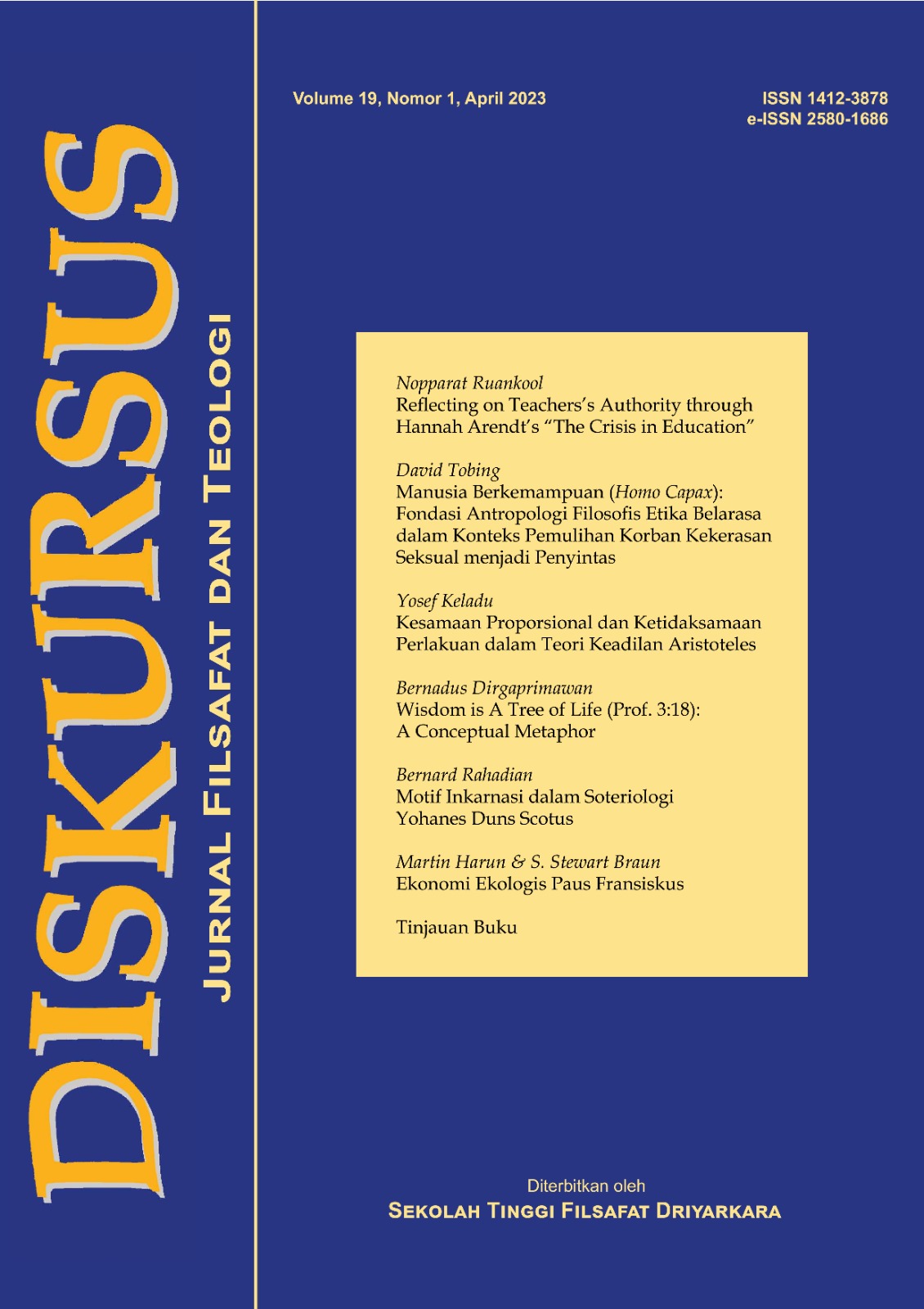Motif Inkarnasi dalam Soteriologi Yohanes Duns Scotus
The Motive behind the Incarnation in John Duns Scotus' Soteriology
Abstract
John Duns Scotus offered an alternative perspective to respect on the mystery of salvation by examining the motive behind the incarnation. Scotus believed that salvation is Christocentric: Motive wise, God incarnate is not primarily anthropocentric, which focuses on the sinfulness of humankind, as traditionally understood in the Catholic Scholastic Theology and taught by Anselm of Canterbury and Thomas Aquinas, but as a total manifestation of His love. Scotus’ Christocentric approach to salvation is in line with his thought on freedom and charity. Scotus believed that God would still have become incarnate even if man had never sinned in the Þ rst place because by taking the form of man, God embodied His love in a total way to His beloved creations.
Scotus’ Christocentric salvation is relational because God is involved with the whole creation in person. Consequently, the Cross is not merely the means of redemption, but as manifestation of God’s inÞ nite love
and His self-giving. Through this essay, the author aims to compare those two approaches and to show the unique character of John Duns Scotus’ soteriology.
Abstrak
Yohanes Duns Scotus menawarkan perspektif alternatif untuk merefleksikan misteri keselamatan dengan mengkaji motif di balik inkarnasi. Dalam refleksi tradisional Teologi Skolastik yang dikembangkan Anselmus Canterbury dan Thomas Aquinas, motif inkarnasi dipahami dalam perspektif antroposentris: keberdosaan manusia menjadi alasan inkarnasi. Bagi Scotus, inkarnasi dan keselamatan bersifat Kristosentris: inkarnasi merupakan manifestasi total kasih Allah. Pendekatan Kristosentris Scotus terkait keselamatan sejalan dengan
gagasannya tentang kebebasan dan kasih. Scotus percaya bahwa Allah.
Kata kunci: Yohanes Duns Scotus, Anselmus Canterbury, Thomas Aquinas, soteriologi, inkarnasi, cinta kasih, kebebasan.
DISKURSUS applies the Creative Commons license (CC BY). We allow readers to read, download, copy, distribute, print, search, or link to the full texts of its articles and allow readers to use them for any other lawful purpose. Full information about CC BY can be found here: https://creativecommons.org/licenses/by/4.0/













